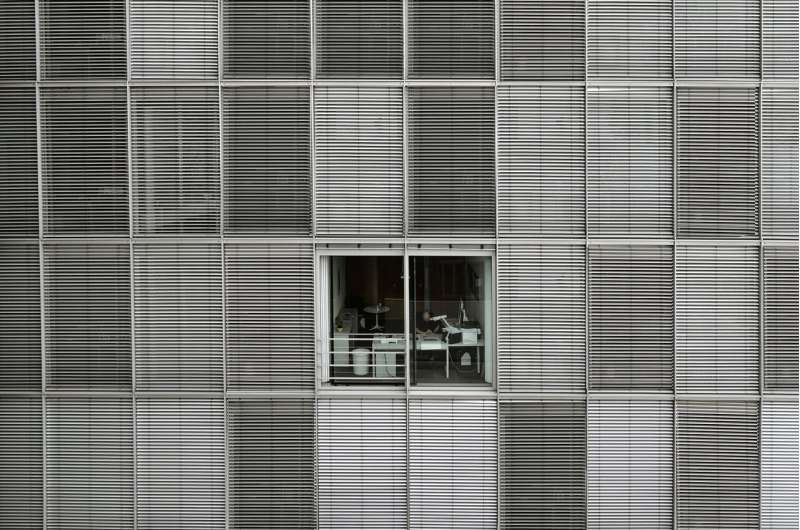A computational model for a more comfortable office

A significant number of people who work in a sun-filled office during summer are forced to squint their eyes or work in the dark with the lights turned on. Shading systems for large buildings still leave substantial room for improvement. That is why building engineer Samuel de Vries developed a sophisticated model that needs to make office spaces more comfortable and more energy efficient. His Ph.D. defense ceremony took place at the department of the Built Environment on Wednesday, February 16.
All he needs to do if he wants to make people appreciate the importance of his research is point to his own workplace, says Samuel de Vries, Ph.D. candidate at the department of the Built Environment, with a smile. "An open-plan office with thirty or forty people during the summer means that there'll be lots of glare where we work. And when someone finally decides to get up from his or her desk to walk across the room and push the button for the shades, everyone gets startled because the shading device makes so much noise when it comes down. Goodbye concentration, but also: goodbye daylight."
During summertime, a significant number of office workers head home at the end of the day with headaches triggered by bright glare or the exact opposite, a lack of daylight, De Vries says. "Daylight is much more important than we might think at first. It impacts various health aspects, including our sleep. That is why a healthy indoor climate is extremely important and one of the main reasons why we set out to develop a better shading system. The current systems were designed for the most part to prevent overheating in offices and to keep the heat out. These automated systems only have two options: fully opened or fully closed."
Interior or exterior
But De Vries' research has shown that there's much more to sun shading than simply pulling down the awnings. In fact, the current models used by building physicists and architects often only cover a single aspect, whereas De Vries combined all these models into a new device that focuses on every imaginable system and their mutual interaction. De Vries: "The sensors—are they located on the roof or on the building's facade, and which part of the light spectrum do they measure? The operating system—when will the shades go up or down, and how far? Which materials and fabrics were used to make the shades? What does the actual shading device look like? What is the width and radius of curvature of the lamellas? What kind of glass was used for the facade design, and did the architects opt for interior or exterior shades?"
De Vries' computational model produced some surprising insights as far as the latter aspect is concerned. In construction practice, exterior sun shading devices are considered the best option, but De Vries has shown that interior sun shades with a smart control system can be much more effective. His model didn't just take workplace comfort into account, but energy use as well. "It's true that exterior sun shades are better at keeping the heat out, which reduces cooling costs. But since these shades are exposed to weather and wind, they need to be very robust. That won't just cause more noise, but it will also make it more difficult to operate the device accurately. When you spend a large amount of time indoors with the shutters closed, you'll consume more energy because you need to turn the lights on. Interior sun shades leave room for better finetuning, which might even make it possible to work with daylight all day long. We've found that a combination of heat-reflecting glass, a metal-coated indoor canvas, and a proper operating system yields better results both in terms of comfort and energy use."
Energy saving
De Vries urges architects to consider operating systems for sun shades in an early phase of the design process. His method would allow architects to optimize these systems for individual buildings and make them an integral design feature of facades. "Facades are an important design element that comes with a variety of standards. However, the shading devices that are attached at a later stage are the responsibility of the end user.
But all you would really need to significantly increase daylight admission is a small static awning above the window and dynamic shading indoors. Or architects could decide to use large windows with a certain combination of operating systems with canvas material, which might even be more energy sufficient if you link it to daylight switching devices. If we use smart design and take advantage of new possibilities, we can bring about change in the workplace. Because in the end, people would prefer to continue to see daylight and the outside world, as well as their computer screens."
More information: A computational framework for analysis and optimisation of automated solar shading systems: Within high performance building facades. research.tue.nl/en/publication … timisation-of-automa


















